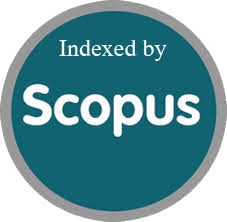Dental Caries Segmentation using Deformable Dense Residual Half U-Net for Teledentistry System
Abstract
Clinical practitioners’ workload and challenges are significantly reduced by classifying, predicting, and localizing lesions or dental caries. In recent research, a high-reliability diagnostic system within deep learning models has been implemented in a clinical teledentistry system. In order to construct an efficient, precise, and lightweight deep learning architecture, it is dynamically structured. In this paper, we present an efficient, accurate, and lightweight deep learning architecture for augmenting spatial locations and improving the transformation modeling abilities of fixed-structure CNNs. Deformable Dense Residual (DDR) enhances the efficacy of the residual convolution block by optimizing its structure, thereby mitigating model redundancy and ameliorating the challenge of vanishing gradients encountered during the training stages. DDR Half U-Net presents notable advancements to the simplified U-Net framework across three pivotal domains: the encoder, decoder, and loss function. Specifically, the encoder integrates deformable convolutions, thereby enhancing the model's capacity to discern features of diverse scales and configurations. In the decoder, a sophisticated arrangement of dense residual connections facilitates the fusion of low-level and high-level features, contributing to comprehensive feature extraction. Moreover, the utilization of a weight-adaptive loss function ensures equitable consideration of both caries and non-caries samples, thereby promoting balanced optimization during training.
Downloads
Copyright (c) 2024 Zendi Iklima, Trie Maya Kadarina, Rinto Priambodo, Riandini, Rika Novita Wardhani, Sulis Setiowati

This work is licensed under a Creative Commons Attribution-ShareAlike 4.0 International License.
Authors who publish with this journal agree to the following terms:
- Authors retain copyright and grant the journal right of first publication with the work simultaneously licensed under a Creative Commons Attribution-ShareAlikel 4.0 International (CC BY-SA 4.0) that allows others to share the work with an acknowledgement of the work's authorship and initial publication in this journal.
- Authors are able to enter into separate, additional contractual arrangements for the non-exclusive distribution of the journal's published version of the work (e.g., post it to an institutional repository or publish it in a book), with an acknowledgement of its initial publication in this journal.
- Authors are permitted and encouraged to post their work online (e.g., in institutional repositories or on their website) prior to and during the submission process, as it can lead to productive exchanges, as well as earlier and greater citation of published work (See The Effect of Open Access).





.png)
.png)
.png)
.png)
.png)
